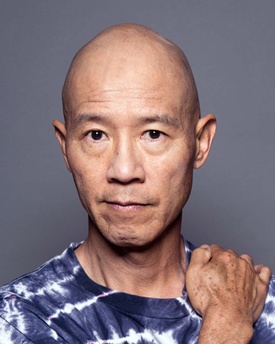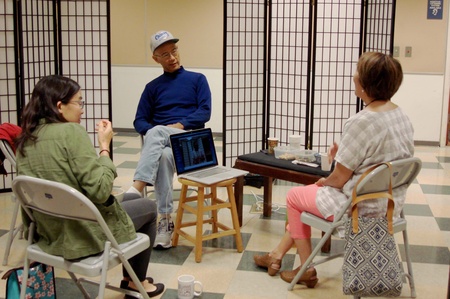“I love stories. I love personal stories. I love life stories. Anybody. I don’t care what your background is. For me, it’s a personal love. I love hearing about the human journey. I don’t care what your journey’s been. I don’t care how plain or uninteresting you think it’s been. Everybody has amazing stories. Everybody has powerful stories. That has been my experience.”
— Dan Kwong
In 2018, The Little Tokyo Service Center started a program called the “+Lab Artist Residency Program” that provides the space and tools that artists need to create. Four artists are staying at the Daimaru Hotel in Little Tokyo for three months. The idea is that these artists will become immersed in the Little Tokyo community which will allow them to gain a better understanding of the struggles that the community is facing first hand. The overarching theme of this program is “Community Control and Self-Determination.” Dan Kwong is the artist that has been paired up with the Japanese American National Museum.
Dan Kwong, born in 1954 to a Japanese mother and Chinese father, is a performance artist, writer, video maker, storyteller, teacher, and director who is interested in the Asian American experience. His most recent work is called What? No Ping Pong Balls? which is a tribute to his mother and her Japanese American experience.
Coming into this project, Dan knew that he wanted to work with seniors. “Partly it’s preserving history and partly it’s acknowledging the significance of senior citizens.” Kwong said, “to engage with them is valuable in and of itself. It is partly a way of supporting them, to have someone interested in them, and then, of course, it is part of gaining wisdom from them.”
Dan has done community-based projects in the past, and his goal is to be able to use art to, “amplify a community voice, to shape and articulate a community voice, to make it something that can be put in front of the public and to articulate the issues [affordable housing for low-income seniors, small business survival, gentrification, etc.].”
After living in Little Tokyo for a month and solidifying his project focusing on certain issues Little Tokyo is facing, Dan started holding sessions at the Japanese American National Museum for people to tell their stories about Little Tokyo. All of Dan’s work ties back to the human connection between oneself and others, how community and isolation affect people. Being engrossed in the Little Tokyo community, he has experienced a new environment, vastly different from his life at 18th Street Art Center in Santa Monica. Instead of taking a car everywhere, he can walk—and it is harder to be isolated. He compared it to a college campus where you see your friends and people you know are out and about.
“I know all the security guards at JANM, I know most of the people that work in that museum. My sister works in the museum. I can wander over and walk into her office. Hi, how’s it going? What are you doing? For no reason, you know.”
As Dan learned more about Little Tokyo’s history, he has found that activism is essential in preserving the community here. Making sure the city listens to what the people need has helped maintain Little Tokyo. The unifying experience of the World War II concentration camps has been a major factor in this community as well, but it does not ultimately define it. Little Tokyo has impacted generations of people not just senior citizens.
“Before I came into this I wanted to focus on senior citizens. You know do some kind of storytelling thing. But then as time has gone by I realized, you know what, I want a multi-generational perspective. So I want some younger people, people my generation, people the generation after me.”
He discovered the stories that people told were all extremely diverse, but they are interwoven with each other. No one’s relationship with Little Tokyo is the same. Dan recorded all the stories that people tell, and once the sessions are over, he will start to transcribe all the stories that he has collected.
“There is this process of generating material, writing stories. And then I get to a certain point where I have generated a whole bunch of stuff. I like to lay it all out on the floor. Where I can see everything at once. And then often times I will—oh that’s a really great story, oh you know what it connects to that story over there, oh you know what this story kind of sets up that story. Or this story talks to that story. And so then the assembling and editing stage happens where you start to give it a shape.”
Once that is complete, Dan will select stories to create his final piece. He chooses them based on how much of an impact they make on him emotionally or the statement that they convey. The next challenge is connecting all the stories that he has chosen to create his performance. The final project will incorporate the experiences that people have shared with his own interpretation. Dan has yet to decide if he will be performing or writing and directing only, but on July 28 and 29, he will present his piece in the Tateuchi Democracy Forum at the Japanese American National Museum.
*This is one of the projects completed by The Nikkei Community Internship (NCI) Program intern each summer, which the Japanese American Bar Association and the Japanese American National Museum have co-hosted.
© 2018 Kira Matsuno





